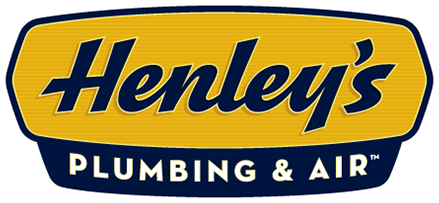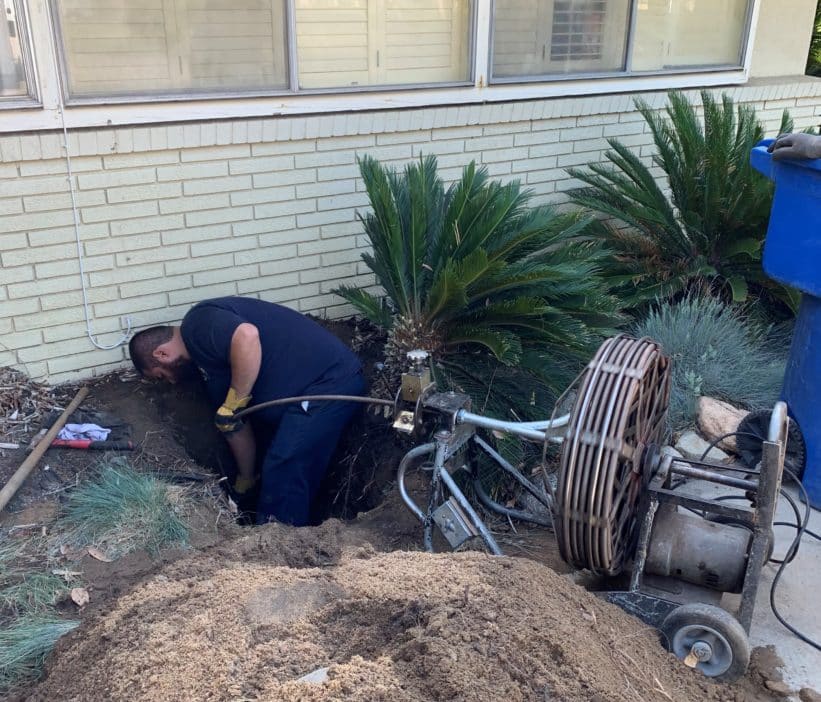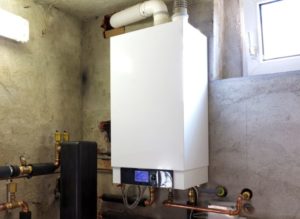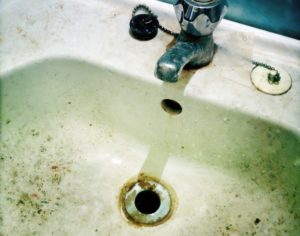Sewer lines are one of those parts of your home that you know is there, but you don’t like to think about them. When it works properly, it’s easy to forget about. When the sewer line gets clogged; however, significant problems soon follow. Wastewater can back up into your home, you can’t use any of your plumbing fixtures, and your family is exposed to contaminated water. You may also be faced with some rather costly repairs. Sewer line clogs need to be dealt with quickly to avoid serious consequences. If you notice any of these five signs of a clogged sewer line, it’s time to call your plumbing expert.
There’s Drainage in the Sewer Cleanout Pipe
The sewer cleanout pipe is a pipe connected to the main sewer line. It gives plumbers direct access to the line so that it can be cleaned out. This pipe is generally located just outside of the home or in the basement or crawlspace. Remove the lid and take a look inside. If there’s a clog in the sewer line, the water can back up into the cleanout pipe, creating standing water. In some cases, the cleanout pipe may even begin to overflow.
You Have Several Slow or Clogged Fixtures
You have several water fixtures in your home, including sinks, showers, tubs, and toilets. All of these fixtures are connected to the sewer line. Sometimes, a clog can affect just one of these fixtures. For instance, hair in your shower drain can clog your shower or a young child tossing a tie into the toilet can cause a clog with that particular toilet. A clog in the sewer line can affect every single one of your water fixtures. You may notice that your sinks, your shower, and your toilet are all draining slowly or backing up. This can indicate a problem with your sewer line.
Using One Fixture Causes a Backup in Another
This particular sign of a clogged sewer line can be a little frightening. You go to take a shower, and suddenly water appears in your sink or your toilet starts to make noise. You flush your toilet and water comes up through the floor drain in your shower. Your toilet might overflow when you turn on the washing machine. When this happens, it can indicate that there’s a clog in your sewer line that’s preventing the wastewater from draining correctly. The water has to go somewhere. Instead of going down, it’s diverted to other drains within your home.
The Water Level in Your Toilet Changes for No Reason
The water level in your toilet doesn’t change much. When there’s a clog in the sewer line, however, it can rise or get lower, seemingly without explanation. You might notice that the water is higher than usual in the morning, but that it’s really low later that same day. When there’s a clog in the sewer line, though, it affects your water pressure. This affects all water fixtures within your home, including your toilet.
There’s the Unmistakable Smell of Sewage
When there’s a clog in your sewer line, this means that your wastewater can’t drain properly. As a result, it collects in the line. Over time, all of the wastewater begins to back up into your home. It doesn’t just come up into your toilet, either. It can come up through your shower drains or sink drains. Even before the backed-up water becomes visible, there’s a good chance that you’ll smell it first. The scent of sewage is unmistakable. It’s also not one you want to have in your home. If you notice that scent coming from any fixtures within your home, whether it’s the toilet, your sinks, or your shower, it’s a fairly good indication that there’s a clog in your sewer line. If you notice this smell, it’s time to call in the professionals.
Final Thoughts
A clogged sewer line can be a scary problem to have. Fortunately, it’s one that can be remedied. While it might be tempting, avoid trying to clear the sewer line clog on your own. A plumber company will be able to get to the root of the problem and fix it for you, giving you back the use of your sewer line while minimizing any damages that might occur. If you notice any symptoms of a clogged sewer line, call your plumber today.




